|
It's 2017, and what better way to bring in the new year than with a pet who is healthy and happy! Many of us have made our New Year's resolutions to exercise and eat healthy, so why not add an extra one by helping our four-legged loved ones lose some extra poundage? Obesity is a common condition we see here at Animal Hospital. What many pet owners don't know is that the “few treats” per day or the table scraps you give your pet can really add up, contributing to obesity and affecting their health. If we tell you your pet is overweight, we promise we’re not trying to place blame—we simply want what's best for your pet! How to tell if your pet is overweightWhen your pet comes in for a physical exam, one of the factors we assess is their weight and their body condition. Body condition refers to where they are on a scale, from emaciated to normal to obese. We use a scale of 1-9, with normal weight being a 4 or 5 out of 9. When you look at your dog, assess them from the top and from the side. From the top, look for a “waist” to tuck in behind the ribs, and from the side, the belly should tuck up. If you gently press on your dog over the ribs and shoulders, there shouldn’t be a thick layer of fat that you can feel under the skin. If you can feel skin, maybe a thin layer of fat, and then the ribs, that’s perfect. If you can see ribs and hip bones sticking out, your pet may underweight, though the start of the rib outlines may be just visible in short-haired dogs, especially the back ribs by the belly. Mamba, Nicole’s German Shepherd, is modeling an appropriate body condition (5/9 on the body condition scale) in these photos. You can see some muscle definition, and her waist tucks in nicely. For cats, they like to accumulate fat in their belly and the fat pad that hangs under their belly. Similar to a dog, there should be a straight line or a waist apparent if you look from the top, but from the side the skin hanging down will hide their belly. As far as weight, cats are much less variable than dogs, so we can give general guidelines. Your average house cat will likely be between 9 and 12 pounds, so if your cat is significantly over or under that range, ask us if they are too thin or overweight. See the “before” and “after” photos below of Iris, Dr. Stambaugh’s cat—she went from 19 pounds to 11 pounds, and you can see how much her belly shrank! Tips for achieving (and maintaining!) a healthy weight: |
| If you live in an area that allows you to hike or walk on natural trails, it is wise to select parks or courses that have shaded areas throughout. Below is Jade, a Siberian Husky who loves to hike- and her owner has chosen a safe walking trail that allows her to take a break and sit in the shade if she needs to. |

- Always bring Water- It is very important to always bring water with you when you go take any expedition outdoors with your dog. Allow frequent water breaks, and every time you take a sip of water, give your dog a drink as well. Remember-staying hydrated is just as vital to our pets’ health as it is for us! To the left, Jade is happy to have a sip of water before she continues with walking.
Staying Cool during Downtime
Home Environment- If your pet typically hangs out in the yard or someplace outdoors while you are not home, make sure that your pets always have access to fresh water that has been placed in a temperature controlled area. For example, do not leave water bowls and dishes in the sun because the heat can make the water too hot, and pets will not drink, or the water might evaporate. Also make sure that your pet has a shaded area to retreat from the hot sun. Dogs that are unable to cool themselves down or unable to relocate out of the sun are easily vulnerable to sicknesses brought on by heat.
Parked Vehicles- Never, ever leave your pets alone in a hot car. Leaving pets locked in cars is never safe, but when the weather gets warmer, high temperatures can cause irreparable organ damage- and can even cause death. It doesn't have to be that warm outside for a car to become dangerously hot inside. Here are some facts:
Parked Vehicles- Never, ever leave your pets alone in a hot car. Leaving pets locked in cars is never safe, but when the weather gets warmer, high temperatures can cause irreparable organ damage- and can even cause death. It doesn't have to be that warm outside for a car to become dangerously hot inside. Here are some facts:
- When it's 72 degrees Fahrenheit outside, the temperature inside your car can heat up to 116 degrees Fahrenheit within an hour.
- When it's 80 degrees Fahrenheit outside, the temperature inside your car can heat up to 99 degrees Fahrenheit within 10 minutes.
- Rolling down the windows has been shown to have little effect on the temperature inside a car.
At-risk groups: The Real Hot Dogs

During the summer, it is good to know that certain breeds of dogs can actually be more susceptible and at-risk for experiencing heat-related illnesses. Dogs in the following categories are at an increased risk for heat-related illness:
- Brachycephalic breeds, or more commonly known as the “smoosh-faced” breeds, do not breathe as easily and have more difficult cooling themselves by panting. Brachycephalic breeds include English and French Bulldogs, Pekingese, Lhasa Apso, Bull Mastiffs, and Charles King Spaniels, Pugs, and Shih Tzus.
- Dogs who are obese are much more prone to overheating
- Older dogs are, in general, less resilient, and more easily affected by the heat and complications from overheating.
When It’s Too Hot For Spot
During the hottest time of the year, the most common illnesses that our pets are at risk for are heatstroke, heat exhaustion and dehydration. Heatstroke and heat exhaustion are very serious medical emergencies, and symptoms include very rapid panting, a bright red tongue, red or pale gums, and thick, sticky saliva. The dog may also show signs of lethargy, weakness and dizziness, vomiting, or diarrhea. If you suspect your dog is suffering from heat stroke, fast action might save their life-you should seek veterinary care right away.
Depending on the circumstance it may be necessary to try and cool your dog down before you can get to a veterinarian, and this can be done by removing the dog from the hot area immediately, and pouring cool or tepid water (not ice cold) over the animal’s body. For a large dog, a hose may be necessary to get them wet all over. Using ice water on an overheated pet can actually make the situation worse, so make sure you douse him or her in water that is close to room temperature. The additional use of a fan blowing cool air will also help.
When a pet with heat stroke is brought into a veterinary hospital, the first priority will be lowering the body temperature to a safe range, and the animal may be given fluids and/or oxygen. A pet brought to a hospital for heat stroke will be monitored for shock, respiratory distress, or kidney failure.
Depending on the circumstance it may be necessary to try and cool your dog down before you can get to a veterinarian, and this can be done by removing the dog from the hot area immediately, and pouring cool or tepid water (not ice cold) over the animal’s body. For a large dog, a hose may be necessary to get them wet all over. Using ice water on an overheated pet can actually make the situation worse, so make sure you douse him or her in water that is close to room temperature. The additional use of a fan blowing cool air will also help.
When a pet with heat stroke is brought into a veterinary hospital, the first priority will be lowering the body temperature to a safe range, and the animal may be given fluids and/or oxygen. A pet brought to a hospital for heat stroke will be monitored for shock, respiratory distress, or kidney failure.
We hope you can use these tips to safely enjoy summer with your furry friends!
Imagine coming home to this...
This is the result of a "forgetful" owner (Kristina's boyfriend) forgetting to put their dog in the crate while they were at work. In addition to eating the couch, he also chewed the TV remote, some kid toys, and a bag of clothes that were supposed to go to Goodwill for donation. Strangely, he ignored the chips that were left on the coffee table right next to the half eaten couch. Silly dog.
Kristina rushed him to Animal Hospital, worried that he may have ingested a battery from the TV remote. Radiographs showed a full stomach, possibly full of foam from the couch; fortunately, there were no signs of a battery. The next day, Bruiser was luckily able to pass a lot of yellow foam, and some small buttons from the TV remote.
Kristina rushed him to Animal Hospital, worried that he may have ingested a battery from the TV remote. Radiographs showed a full stomach, possibly full of foam from the couch; fortunately, there were no signs of a battery. The next day, Bruiser was luckily able to pass a lot of yellow foam, and some small buttons from the TV remote.
Crate training can help with house training and can prevent destructive chewing when you are not at home. A crate can also act as your dog's "safe spot," a place where they can find comfort to sleep, and feel safe and secure. Also, if a dog is injured, or has surgery, it will often be recommended that they be in a crate to restrict their activity while they recover, so it is very helpful if they are used to the crate already.
Choosing the right crate
Crate training tips
For more information, visit The Humane Society's page about crate training.
- Several types of crates are available, including plastic crates (good for traveling), soft fabric crates, and collapsible metal crates.
- The crate should be large enough for them to stand up and turn around in. If you are getting a crate for a growing puppy, choose a crate size that will accommodate their adult size.
Crate training tips
- The training process could take days or weeks depending on your dog's temperament and past experiences. Approach crate training gradually.
- Crate training should always be associated with something pleasant, and a lot of patience. A good way to start is to give treats or meals in the crate, with the door open.
- Avoid using the crate as punishment, as your dog can come to fear it and refuse to enter. Instead, the crate should be a space where they feel safe and secure.
For more information, visit The Humane Society's page about crate training.
At Animal Hospital in Fairfield, we love shelter and rescue pets! If you bring your newly adopted pet in to see us for a wellness checkup within 30 days, we celebrate your new addition with a complimentary first office visit. All you need to do is let us know when you schedule the appointment that you adopted your pet from a rescue or shelter within the last 30 days, and bring in the adoption paperwork with you.
No matter where you adopted your new furry friend, it is important to get them checked out by a veterinarian. We can make sure their vaccines are up to date and recommend any parasite prevention products they might need. For kittens, we will recommend testing them for FeLV and FIV, and protecting them with the FVRCP, FeLV and rabies vaccines. For puppies, we recommend DHPP, Bordetella and rabies vaccines.
If you’ve adopted an older pet, it is also a good idea to schedule them for an exam. When you bring them in, we can estimate their age, give them a general exam, and make sure their vaccines are up to date. We may recommend a dental procedure, discuss nutrition, or recommend bloodwork to check their organ function. We carry products to prevent fleas, ticks, and heartworms in both dogs and cats.
No matter where you adopted your new furry friend, it is important to get them checked out by a veterinarian. We can make sure their vaccines are up to date and recommend any parasite prevention products they might need. For kittens, we will recommend testing them for FeLV and FIV, and protecting them with the FVRCP, FeLV and rabies vaccines. For puppies, we recommend DHPP, Bordetella and rabies vaccines.
If you’ve adopted an older pet, it is also a good idea to schedule them for an exam. When you bring them in, we can estimate their age, give them a general exam, and make sure their vaccines are up to date. We may recommend a dental procedure, discuss nutrition, or recommend bloodwork to check their organ function. We carry products to prevent fleas, ticks, and heartworms in both dogs and cats.
Summer time is right around the corner which offers the perfect weather for road trips, sunsets, ice cream, beaches, hikes, and... foxtails! You may be wondering “what is that?!” A foxtail is a very common meadow grass seed in California that has soft, brush-like flowering spikes. These can be very dangerous for our pets and are more prevalent than most think. Here are some examples of what foxtails look like:
Foxtails burrow their way through the soil and lie freely on the ground outside. Just like foxtails burrow into your socks when you walk through tall grass, they can easily burrow their way through fur and into skin. Foxtails are also often sniffed into the nose or caught in the ear or the eye! Once a foxtail gets stuck, it can travel very deep because of its arrow-head like shape. Foxtails often carry bacteria, causing an abscess. This can be very painful and your pet will begin to show signs of discomfort such as licking, limping, sneezing, rubbing or chewing.
Here is an example of what a foxtail in the eye looks like:
Here is an example of what a foxtail in the eye looks like:
This pet's name is Cobain and as you can see, his left eye is obviously causing discomfort. After being outside for just one day, his owner found him like this. The eye was very swollen and painful. A topical anesthetic was used to numb the eye, then Dr.Stambaugh was able open the eye and under the eyelid there was a foxtail!
Here are some common tools used in the veterinary hospital to remove foxtails:
Here are some common tools used in the veterinary hospital to remove foxtails:
The doctor will need an otoscope to look down the pets ears and nose, or an ophthalmoscope to look in the eyes. Once the foxtail is found we will then clip, clean, and flush the wound. Alligator forceps are a long, narrow instrument with a grasping end used to remove the foxtail from deep inside wounds. Because foxtails are painful and can burrow very deep, sometimes sedation and pain medication are needed to help a pet tolerate these types of procedures.
As you are enjoying this summer season be on the lookout for these golden, brush-like spikes known as foxtails!
As you are enjoying this summer season be on the lookout for these golden, brush-like spikes known as foxtails!
This month’s theme involves fleas, ticks, and heartworms, and how we can prevent them in our pets. As it is starting to get warmer we are all looking forward to spending more time outside this summer with our “furfriends” and they could be exposed to parasites. Therefore, it's important that we keep them current on all of the parasite preventative products recommended for their lifestyle.
Let's first take a look at the *flea*, which is the most commonly known pest to both dogs, cats and us as humans. Fleas can become a big problem very quickly, and they can be hard to eliminate because there are 4
life stages to the common flea and different strategies are needed to address each stage. The *first stage* is when an adult female flea lays eggs—one flea can lay up to 40 eggs per day! This is why it is important to
pick a flea preventative that kills the adult fleas as quickly as possible, before they have a chance to lay eggs in your house. Flea eggs can take between two days and two weeks to develop depending on the temperature and humidity. The *second stage* is when the egg emerges into a larva. Larvae are blind, legless and white in color. Larvae develop over a few weeks and survive by eating pre-digested blood (flea dirt). After the larvae hatches from the egg, in about 5-20 days it will move on to the *third stage* by spinning a pupa (cocoon). The cocoon will protect the pupa inside for several days, even weeks. If the environment is not adequate for the adult flea to emerge the cocoon will protect the flea as it develops for several months. The cocoons are sticky which helps them hide deep in fabric, carpet and the animals fur which can make it hard to eliminate them at this stage. The progression of these different life stages means if you have a flea infestation, you will need to decontaminate multiple times over several weeks to months to make sure to deal with the newly hatching eggs, larvae, and pupae. The last *final stage* is the adult flea, which can live from a few weeks to months. Fleas live by feeding from a host (dog or cat). The adult fleas can bite their host many times per hour, and while some animals are not bothered by a few fleas, others can be intensely itchy and have allergic reactions to just a few flea bites. Because “flea season” lasts pretty much all year in our area, we recommend all dogs and all cats that go outdoors be treated monthly with a flea preventative. Here at Animal Hospital we recommend Nexgard (oral chewable) or Frontline Tritak (topical) for dogs and Revolution (topical) and Frontline Tritak (topical) for cats.
*Ticks*are another common parasite seen on dogs and cats who spend time outside. Ticks hang out on grass and plants and jump onto a host when they brush by. Once a tick latches on to its host it only takes 24-48 hours to transmit an infection, so it is best to use a monthly tick-preventative product if your pet is exposed to ticks. It is also important to check your pet for ticks after hiking and other outdoor activities. If your pet does get a tick attached to them, you can bring them to the veterinarian to have it removed, or you can remove it yourself at home. If you remove it yourself, take the following precautions: wear gloves to protect yourself, get a pair of tweezers, grasp the tick as close to the skin as possible, and pull the tick straight out. You can also use a tick-remover device. You don't want to leave any pieces behind, because that can cause infection. Once the tick is removed it would be best to save the tick in a jar with alcohol in it so you could have the tick identified by a Veterinarian. Both Nexgard and Frontline Tritak kill ticks as well as fleas.
The third major parasite we discuss routinely is *heartworms*. Living in California, your pet has a moderate chance of being exposed to heartworms. These parasites are transmitted by mosquitoes, which carry the larva and infect pets when they bite. The larva take 6 months to mature into adult heartworms, so that’s how long after becoming infected it takes for a pet to turn up positive on a heartworm test. Heartworms can cause heart failure in dogs, and can be dangerous and expensive to treat. We recommend testing dogs annually to make sure they have not been infected, and keeping all dogs on monthly heartworm prevention. Cats do not become infected with adult heartworms as commonly as dogs do, but exposure to the larvae can cause lung disease that is similar to asthma, and a single adult worm can cause death, so we also recommend cats that go outdoors be on monthly heartworm prevention as well. These products also have the benefit of treating some of the intestinal parasites your pets might be exposed to, such as roundworms. We carry Heartgard (chewable tablet) for dogs and Revolution (topical) for cats.
If you are interested in learning more about parasites in your area, their lifecycles, and how to prevent them from infesting your pet, we recommend this website: CAPCvet.org
Let's first take a look at the *flea*, which is the most commonly known pest to both dogs, cats and us as humans. Fleas can become a big problem very quickly, and they can be hard to eliminate because there are 4
life stages to the common flea and different strategies are needed to address each stage. The *first stage* is when an adult female flea lays eggs—one flea can lay up to 40 eggs per day! This is why it is important to
pick a flea preventative that kills the adult fleas as quickly as possible, before they have a chance to lay eggs in your house. Flea eggs can take between two days and two weeks to develop depending on the temperature and humidity. The *second stage* is when the egg emerges into a larva. Larvae are blind, legless and white in color. Larvae develop over a few weeks and survive by eating pre-digested blood (flea dirt). After the larvae hatches from the egg, in about 5-20 days it will move on to the *third stage* by spinning a pupa (cocoon). The cocoon will protect the pupa inside for several days, even weeks. If the environment is not adequate for the adult flea to emerge the cocoon will protect the flea as it develops for several months. The cocoons are sticky which helps them hide deep in fabric, carpet and the animals fur which can make it hard to eliminate them at this stage. The progression of these different life stages means if you have a flea infestation, you will need to decontaminate multiple times over several weeks to months to make sure to deal with the newly hatching eggs, larvae, and pupae. The last *final stage* is the adult flea, which can live from a few weeks to months. Fleas live by feeding from a host (dog or cat). The adult fleas can bite their host many times per hour, and while some animals are not bothered by a few fleas, others can be intensely itchy and have allergic reactions to just a few flea bites. Because “flea season” lasts pretty much all year in our area, we recommend all dogs and all cats that go outdoors be treated monthly with a flea preventative. Here at Animal Hospital we recommend Nexgard (oral chewable) or Frontline Tritak (topical) for dogs and Revolution (topical) and Frontline Tritak (topical) for cats.
*Ticks*are another common parasite seen on dogs and cats who spend time outside. Ticks hang out on grass and plants and jump onto a host when they brush by. Once a tick latches on to its host it only takes 24-48 hours to transmit an infection, so it is best to use a monthly tick-preventative product if your pet is exposed to ticks. It is also important to check your pet for ticks after hiking and other outdoor activities. If your pet does get a tick attached to them, you can bring them to the veterinarian to have it removed, or you can remove it yourself at home. If you remove it yourself, take the following precautions: wear gloves to protect yourself, get a pair of tweezers, grasp the tick as close to the skin as possible, and pull the tick straight out. You can also use a tick-remover device. You don't want to leave any pieces behind, because that can cause infection. Once the tick is removed it would be best to save the tick in a jar with alcohol in it so you could have the tick identified by a Veterinarian. Both Nexgard and Frontline Tritak kill ticks as well as fleas.
The third major parasite we discuss routinely is *heartworms*. Living in California, your pet has a moderate chance of being exposed to heartworms. These parasites are transmitted by mosquitoes, which carry the larva and infect pets when they bite. The larva take 6 months to mature into adult heartworms, so that’s how long after becoming infected it takes for a pet to turn up positive on a heartworm test. Heartworms can cause heart failure in dogs, and can be dangerous and expensive to treat. We recommend testing dogs annually to make sure they have not been infected, and keeping all dogs on monthly heartworm prevention. Cats do not become infected with adult heartworms as commonly as dogs do, but exposure to the larvae can cause lung disease that is similar to asthma, and a single adult worm can cause death, so we also recommend cats that go outdoors be on monthly heartworm prevention as well. These products also have the benefit of treating some of the intestinal parasites your pets might be exposed to, such as roundworms. We carry Heartgard (chewable tablet) for dogs and Revolution (topical) for cats.
If you are interested in learning more about parasites in your area, their lifecycles, and how to prevent them from infesting your pet, we recommend this website: CAPCvet.org
PROMOTIONS TO TAKE ADVANTAGE OF THIS MONTH!
March is allergy awareness month
There are 3 different types of allergies your pets can have: environmental allergies, food allergies, and flea allergy dermatitis.
Environmental allergies such as pollens and grasses can be an outdoor irritant to your pet as well as dust, mites, and mold which are known as indoor irritants. Outdoor allergies can be seasonal and indoor allergies may be year round. Pets will respond to an allergen after it is absorbed through the skin or after it is inhaled. Itchiness and skin issues are the most common symptoms with allergies but in some cases, pets can develop respiratory issues such as sneezing, coughing or watery/red eyes.
Food allergies can come with several different symptoms; Digestive upset (vomiting or diarrhea), itchy skin, coughing/sneezing, swollen paws, red/itchy eyes, nasal discharge, inflamed ears. A strict dietary elimination trial is one of the best ways to see if your pet has a food allergy. Food should be balanced and contain as few ingredients/additives as possible.
Flea allergy dermatitis (FAD) is a sensitivity to flea saliva commonly seen in dogs and cats. Affected pets may have a severe reaction to even one bite from a flea. Itching and discomfort are some of the first signs you would see and if left untreated your pet can cause damage to its skin by excessive scratching. Other signs are hair loss, scabs, oozing or crusted over sores, or unpleasant odors from secondary infection. The only way to treat (FAD) is to remove all fleas from the pet and environment and treat the dermatitis caused by the allergy. Once a flea infestation is established it can be very difficult to eliminate them. Pets should be treated monthly with flea prevention. At Animal Hospital in Fairfield we carry Nexgard or Frontline for dogs and Revolution or Frontline for cats though our veterinarians may recommend a different product depending on your pet's situation.
There are 3 different types of allergies your pets can have: environmental allergies, food allergies, and flea allergy dermatitis.
Environmental allergies such as pollens and grasses can be an outdoor irritant to your pet as well as dust, mites, and mold which are known as indoor irritants. Outdoor allergies can be seasonal and indoor allergies may be year round. Pets will respond to an allergen after it is absorbed through the skin or after it is inhaled. Itchiness and skin issues are the most common symptoms with allergies but in some cases, pets can develop respiratory issues such as sneezing, coughing or watery/red eyes.
Food allergies can come with several different symptoms; Digestive upset (vomiting or diarrhea), itchy skin, coughing/sneezing, swollen paws, red/itchy eyes, nasal discharge, inflamed ears. A strict dietary elimination trial is one of the best ways to see if your pet has a food allergy. Food should be balanced and contain as few ingredients/additives as possible.
Flea allergy dermatitis (FAD) is a sensitivity to flea saliva commonly seen in dogs and cats. Affected pets may have a severe reaction to even one bite from a flea. Itching and discomfort are some of the first signs you would see and if left untreated your pet can cause damage to its skin by excessive scratching. Other signs are hair loss, scabs, oozing or crusted over sores, or unpleasant odors from secondary infection. The only way to treat (FAD) is to remove all fleas from the pet and environment and treat the dermatitis caused by the allergy. Once a flea infestation is established it can be very difficult to eliminate them. Pets should be treated monthly with flea prevention. At Animal Hospital in Fairfield we carry Nexgard or Frontline for dogs and Revolution or Frontline for cats though our veterinarians may recommend a different product depending on your pet's situation.
Dental care is very important to your pet's health. This February, we are joining the cause of National Pet Dental Month to spread the word of the importance or your pet's dental hygiene. Unfortunately, plaque starts to form shortly after it is removed, and if the plaque is not removed it will harden into calculus (tartar) which has to be removed by scaling under anesthesia. The associated bacteria under the gum line can travel to the Liver, Kidneys and Heart. Regular at home dental care can help prevent dental disease by removing plaque as it forms and preventing calculus from forming. In addition to providing dental cleaning and treatment of diseased teeth, we can discuss with you how to prevent dental disease by keeping your pet's teeth clean at home.
At Animal hospital in Fairfield we offer routine dental cleanings (scaling and polishing) with full mouth digital radiographs. We first preform a pre-op exam before being placed under full anesthesia for a dental cleaning. This way we are able to discuss your pet's specific dental state and inform you of any recommendations before or during the procedure. Dental disease can begin with your pet having bad breath, tooth loss, or painful chewing; call us for an appointment if you notice any of these signs.
Other special dates in February:
02/20/2016 Love your pet day
02/23/2016 Dog biscuit day
To celebrate we want to offer our clients a 10% discount on our dental prophylaxis package!
Here are some before and after pictures of Rocco and his dental journey:
At Animal hospital in Fairfield we offer routine dental cleanings (scaling and polishing) with full mouth digital radiographs. We first preform a pre-op exam before being placed under full anesthesia for a dental cleaning. This way we are able to discuss your pet's specific dental state and inform you of any recommendations before or during the procedure. Dental disease can begin with your pet having bad breath, tooth loss, or painful chewing; call us for an appointment if you notice any of these signs.
Other special dates in February:
02/20/2016 Love your pet day
02/23/2016 Dog biscuit day
To celebrate we want to offer our clients a 10% discount on our dental prophylaxis package!
Here are some before and after pictures of Rocco and his dental journey:

Did anyone add a new pet to the family this holiday season? If so, all of the staff at Animal Hospital in Fairfield we would love to meet them.
January was chosen as National Train Your Dog Month because dogs and puppies are commonly purchased or adopted during the holidays. Sometimes, it can be hard to know if you've made the right decision by taking on a rambunctious puppy. Proper training can be the key to a wonderful relationship between you and your pet. This can also decrease the chances of puppies needing to be re-homed for behavioral issues. Along with your personal New Years resolution, let us help you make a resolution to also learn something new about training your puppy. Knowing where to start can be the trickiest part of the process. Please call us so that we can provide you with a current list of recommended trainers.
Pros to training:
- Strengthens you and your pet's bond and reinforces confidence that you are their leader.
- Decreases behavioral/anxiety issues such as chewing, barking, and potty training.
- Adds a safety factor to your training process avoiding fear and consistent obedience.
Animal Hospital in Fairfield also offers convenient Puppy Packages that include free exam fees for 6 months. This gives you the opportunity to bring your fur baby in, even when something might not necessarily be wrong. When your pet has positive visits at the hospital full of cuddles and perhaps some treats, they are less likely to grow fearful of the environment.
January was chosen as National Train Your Dog Month because dogs and puppies are commonly purchased or adopted during the holidays. Sometimes, it can be hard to know if you've made the right decision by taking on a rambunctious puppy. Proper training can be the key to a wonderful relationship between you and your pet. This can also decrease the chances of puppies needing to be re-homed for behavioral issues. Along with your personal New Years resolution, let us help you make a resolution to also learn something new about training your puppy. Knowing where to start can be the trickiest part of the process. Please call us so that we can provide you with a current list of recommended trainers.
Pros to training:
- Strengthens you and your pet's bond and reinforces confidence that you are their leader.
- Decreases behavioral/anxiety issues such as chewing, barking, and potty training.
- Adds a safety factor to your training process avoiding fear and consistent obedience.
Animal Hospital in Fairfield also offers convenient Puppy Packages that include free exam fees for 6 months. This gives you the opportunity to bring your fur baby in, even when something might not necessarily be wrong. When your pet has positive visits at the hospital full of cuddles and perhaps some treats, they are less likely to grow fearful of the environment.
Author
Our technicians and doctors write posts for this blog, hoping to keep our clients informed and entertained. We hope you find their topics helpful and fun to read about!
Archives
December 2019
September 2018
April 2018
February 2018
October 2017
September 2017
April 2017
March 2017
January 2017
October 2016
July 2016
June 2016
May 2016
April 2016
March 2016
January 2016

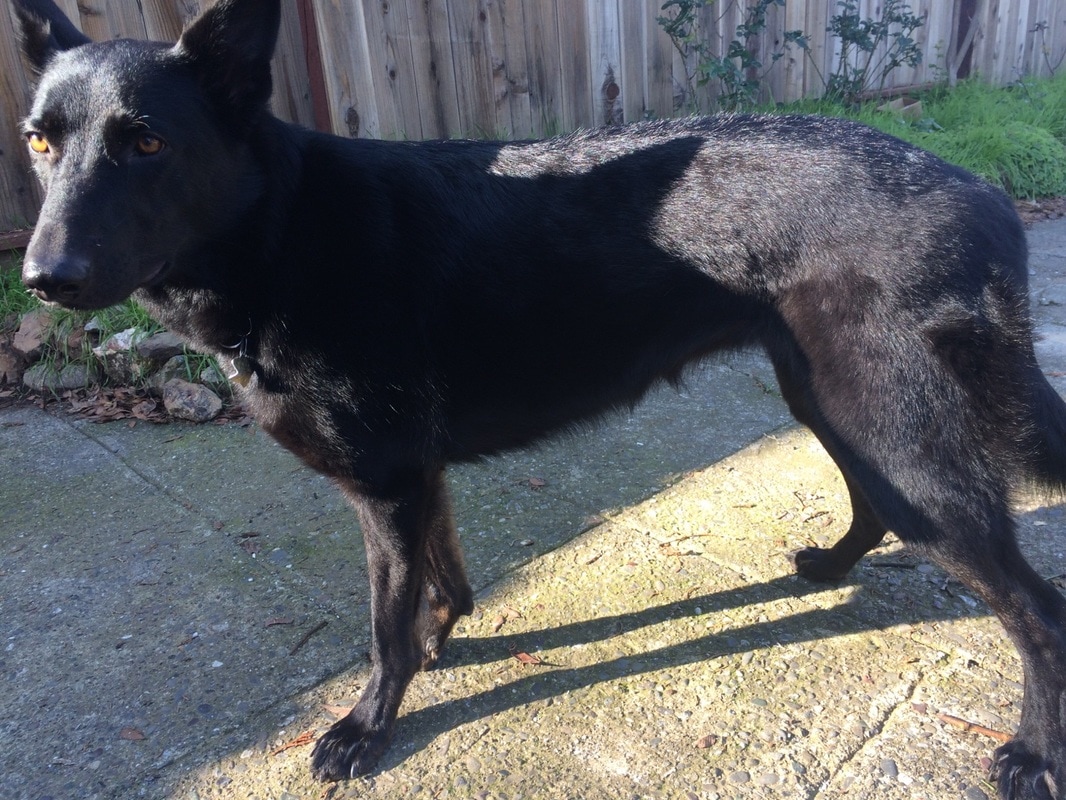
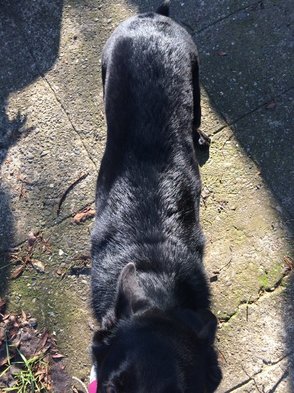


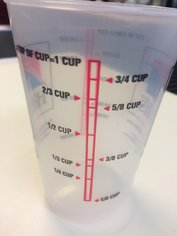
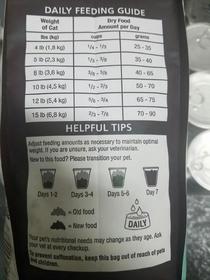
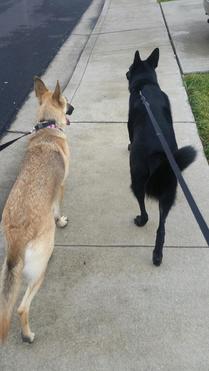
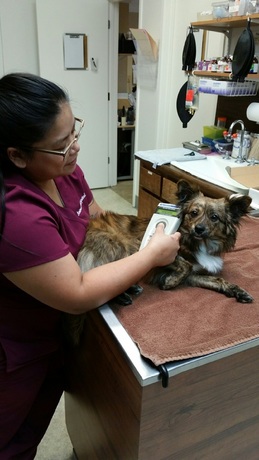
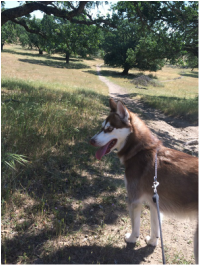
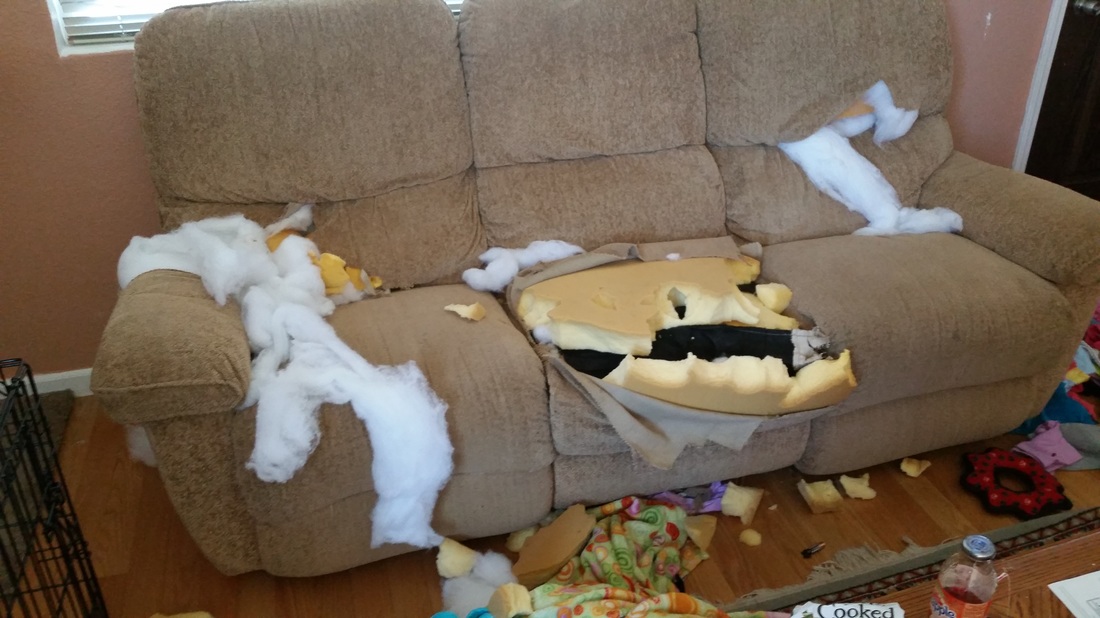
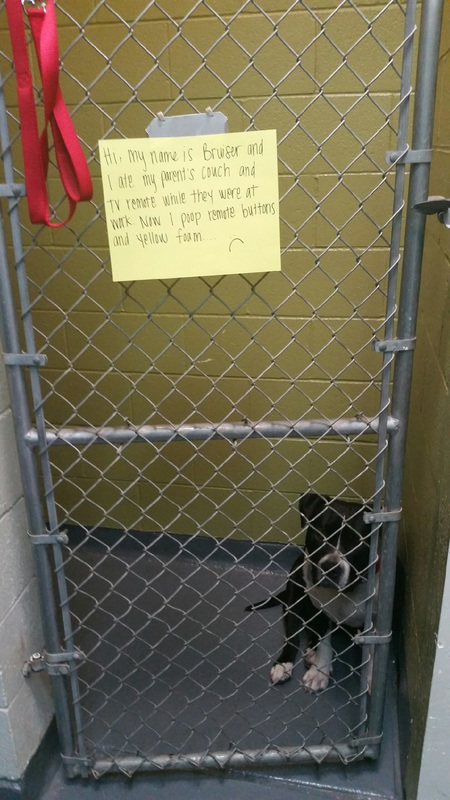
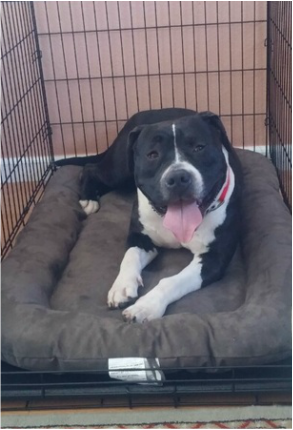

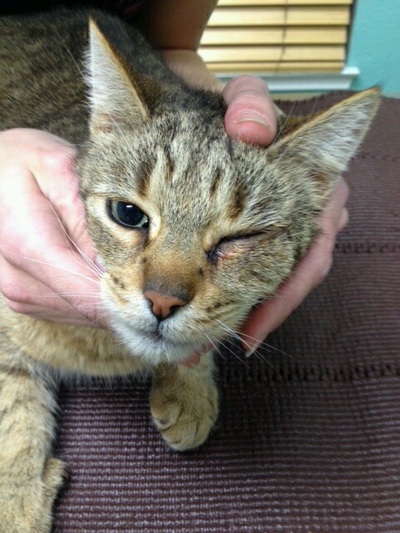
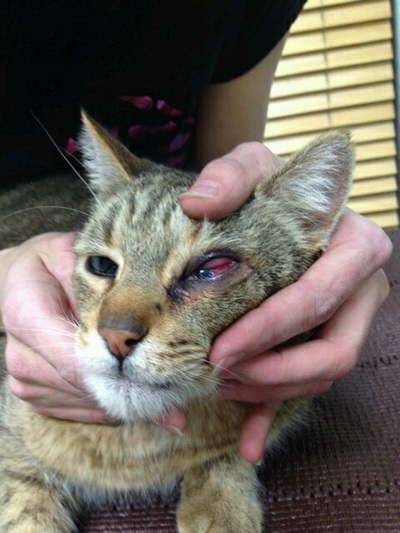
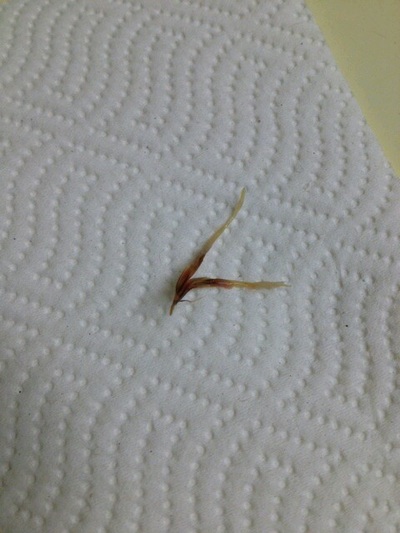
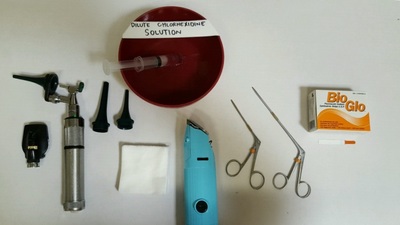

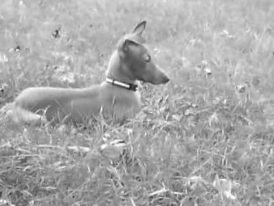
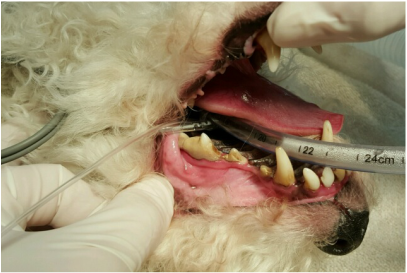
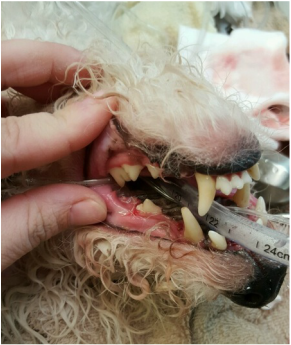
 RSS Feed
RSS Feed



